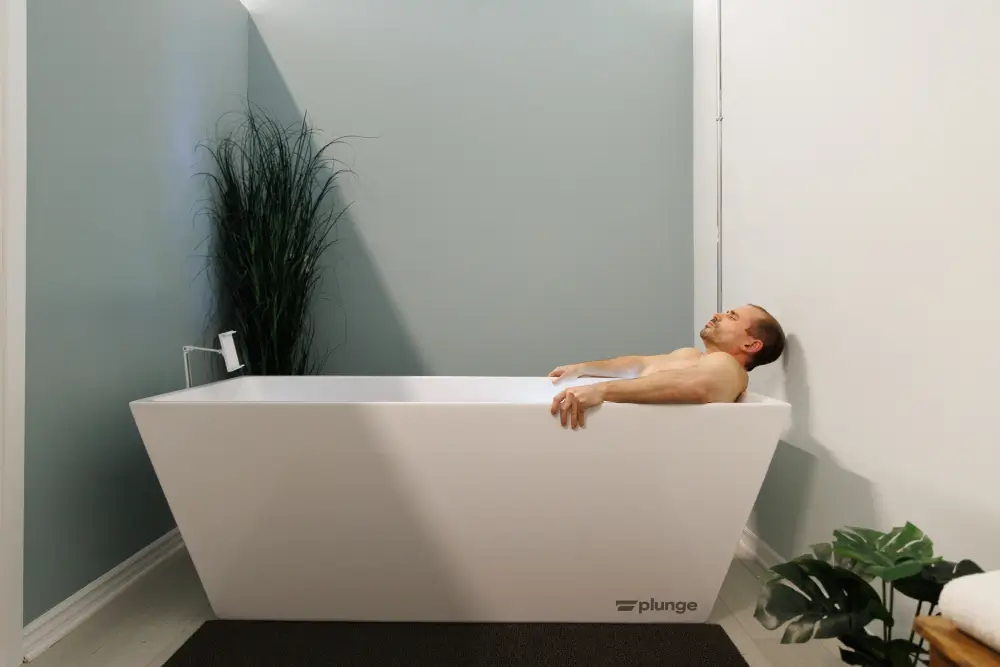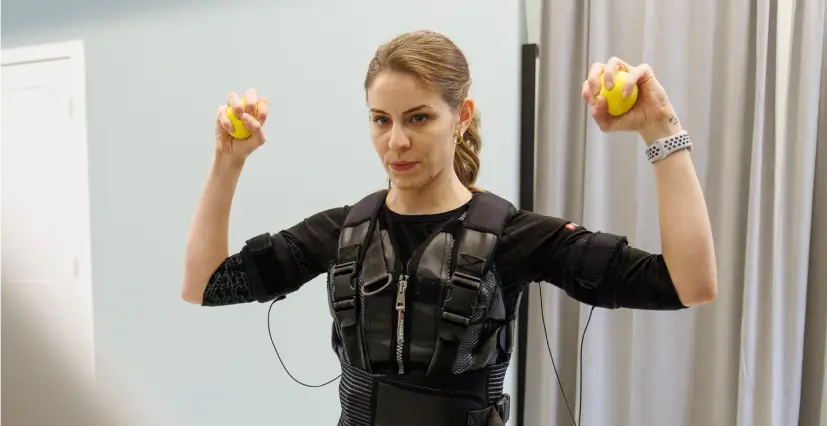Revitalize Skin & Boost Recovery with Red Light Therapy
An easy and effective way to boost your natural healing power. Red Light Therapy has been shown to improve the appearance of skin, reduce pain and inflammation, and provide a mental wellness boost. Join us today at our state-of-the-art biohacking studio in Toronto.

Rejuvenate Skin

Reduce Inflammation

Increase ATP Production




Over 1,200 Customers Served

5.0 Star Average Google Reviews

Locally Owned and Operated

State-of-the-Art Equipment
What is Red Light Therapy?
Heal Your Body at a Cellular Level with Red Light Therapy
Red light therapy, also known as low-level light therapy (LLLT) or photobiomodulation, is a non-invasive treatment that involves exposing the body to low levels of red, near-infrared, and yellow light.
This light exposure stimulates a cascade of biochemical responses that have been scientifically proven to contribute to healing and rejuvenation in both body and mind. Anti-inflammatory properties make it great at speeding up recovery after exercise or injury, as well as reducing pain in joints and ligaments.
Due to its ability to stimulate blood flow, detoxification, and collagen production, it’s also commonly used to treat skin conditions such as acne, rosacea, and psoriasis.
How Does it Work

Direct Exposure
Specific wavelengths of visible red and near-infrared light that have been shown to have unique healing properties penetrate deep into the body to trigger the desired biochemical response.

Blood Flow
Stimulating the release of nitric oxide – a vasodilator – means improved circulation of nutrient and oxygen-rich blood to target areas. This can accelerate healing and reduce pain.

Inflammation
RLT can reduce inflammation by targeting immune cells and cytokines involved in the inflammatory response. This makes it useful for conditions like arthritis, muscle soreness, and joint pain.

Collagen
Proven to increase collagen production – RLT is great for improving skin elasticity and skin tone while reducing fine lines and wrinkles.
What to Expect
Before Your Session
Consultation:
You’ll have a consultation with a Cryomend specialist to discuss your goals, health history, and suitability for Red Light Therapy.
Informed Consent:
You’ll be provided with detailed information about the procedure and asked to sign an informed consent form.
Eye Protection:
To protect your eyes, we provide special glasses designed for this purpose.
During Your Session
Private Relaxation:
Each treatment is conducted in a private room, ensuring your comfort and privacy. Each session lasts 10 minutes.
Sit or Stand:
You can stand or sit in front of the red light panels, whichever is more comfortable for you.
Zen Mode:
During the treatment, you are free to move around, listen to music, or simply meditate, allowing you to relax and enjoy the experience.
After Your Session
No Downtime Needed:
After your Red Light Therapy session, you can get right back to your day with no downtime needed.
Hydration:
It’s recommended to drink plenty of fluids after your session as you may sweat out some water.
Repeat:
Regular treatments will help to ensure you enjoy the benefits of Red Light Therapy, which can include accelerated joint and muscle recovery, reduced fatigue, improved mental health, as well as improved skin.
Application & Benefits
Improve Skin
Red light therapy promotes collagen production, which helps improve skin elasticity, reduces the appearance of wrinkles, and enhances overall skin tone.
Pain Relief
A boost of endorphins can lead to reduced inflammation and natural pain-relief for conditions such as arthritis, muscle soreness, and joint pain.
Recovery
RLT can speed up muscle recovery and reduce fatigue. Increased ATP production means your cells have more energy for repair and regeneration after training.
Enhanced Wellness
Studies have shown RLT to have a positive impact on mental health conditions such as depression, anxiety, and even dementia. It can also help to improve sleep quality.
Membership Options
Memberships
Repair
$299/month
Red Light Therapy
Normatec Compression
Contrast Therapy (Cold Plunge & Infrared Sauna)
Revive
$499/month
Red Light Therapy
Normatec Compression
Cryotherapy: Local & Facial
Carol Bike
Contrast Therapy (Cold Plunge & Infrared Sauna)
Restore
$399/month
Red Light Therapy
Normatec Compression
Cryotherapy: Local & Facial
Carol Bike
Membership Perk
All Cryomend memberships give you a 15% discount on single-session services.
Subscribe to Our Newsletter
Unlock your body’s full potential with Cryomend’s exclusive newsletter! Join our community of biohackers and health enthusiasts dedicated to pain relief, muscle recovery, and holistic wellness.
Red Light Therapy in Toronto
Rejuvenate skin, increase ATP production, and reduce inflammation at our state-of-the-art studio in Toronto. Cryomend is located at 201 Wicksteed Ave. Visit us today!
Other Services


60 mins


45 mins


20 mins


20 mins